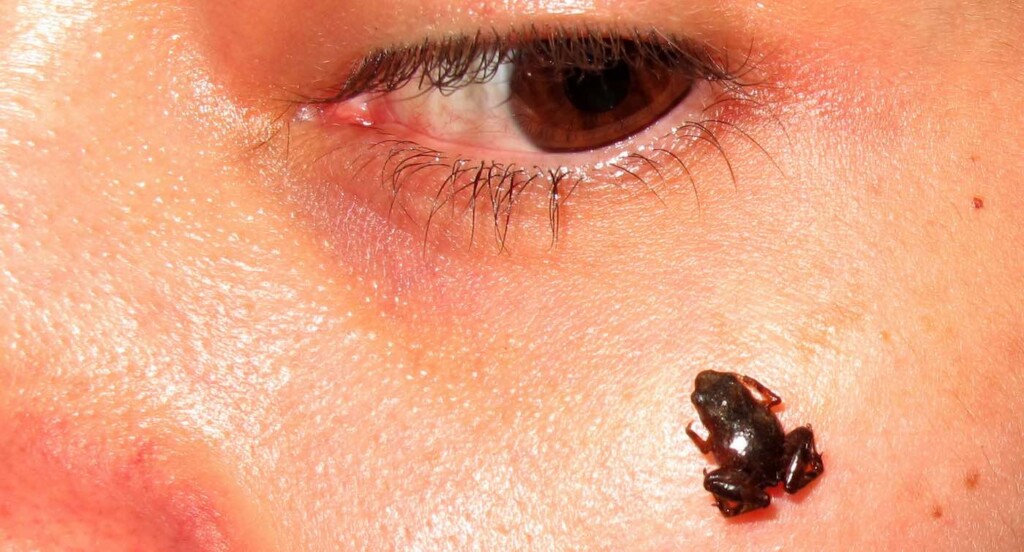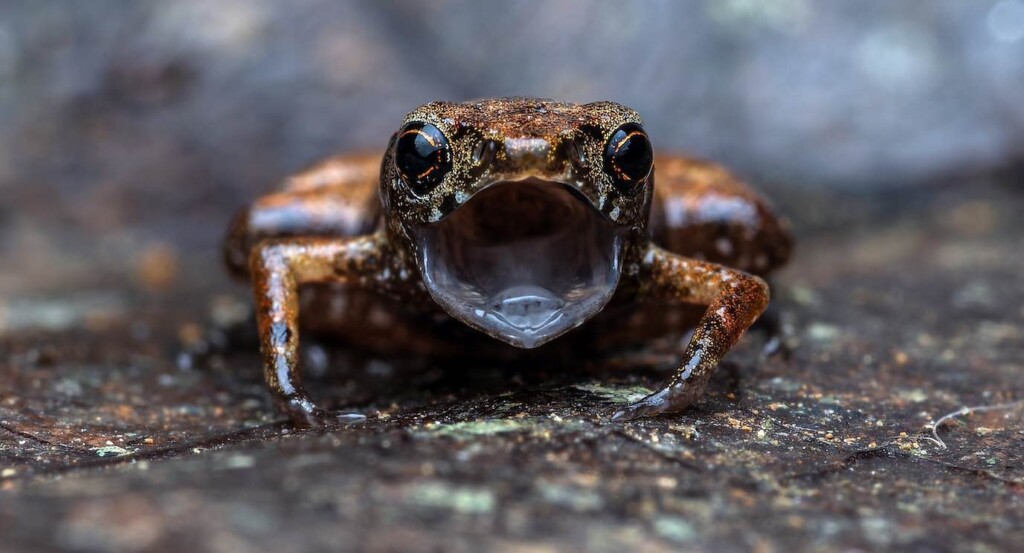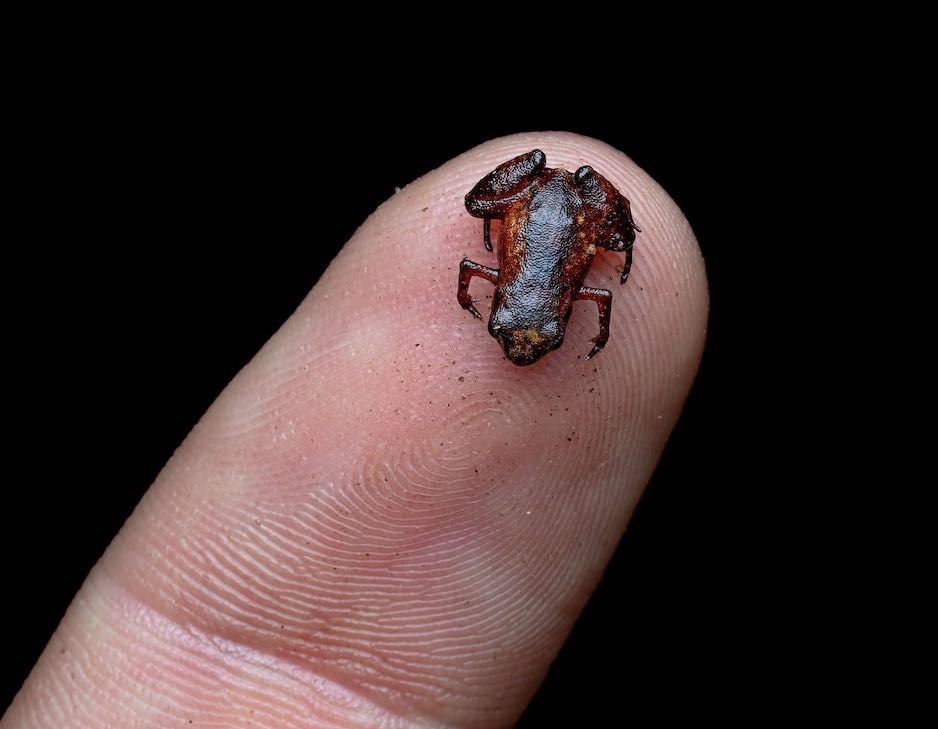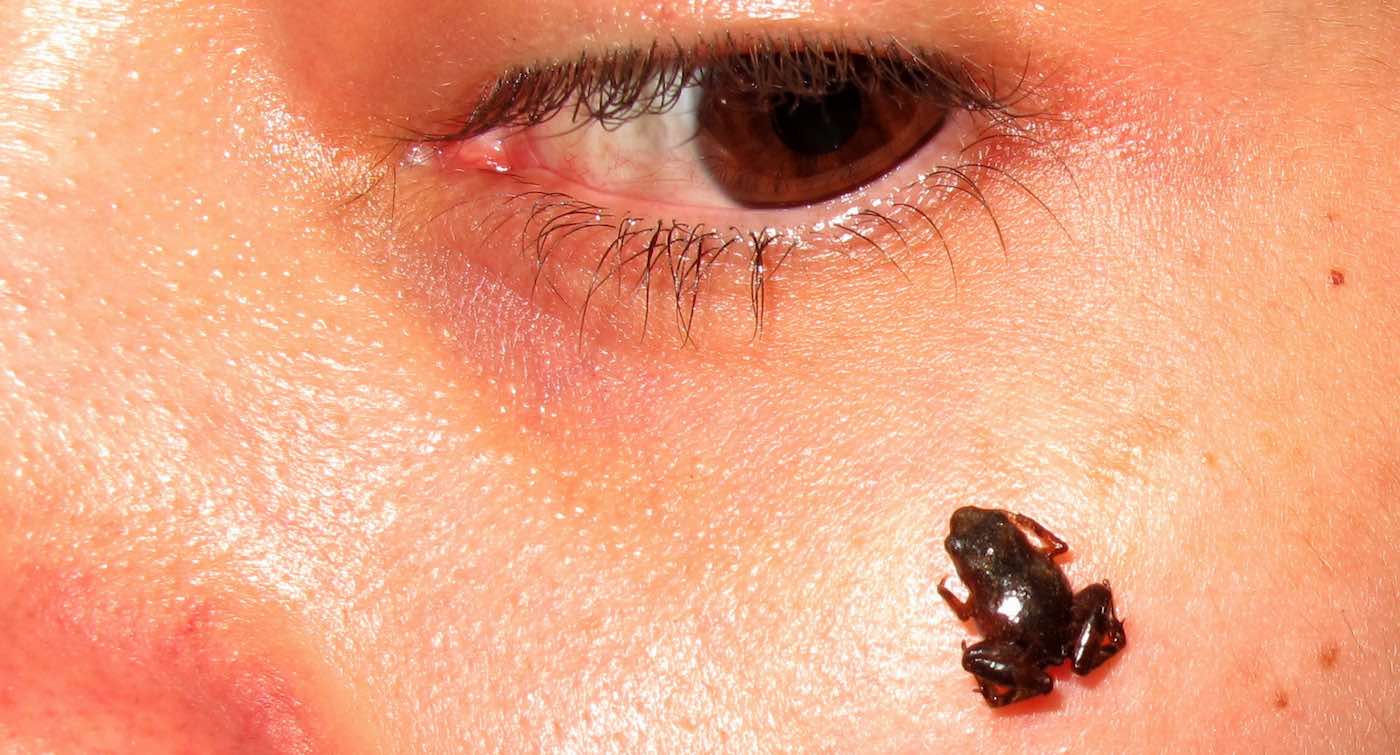
The world’s second-smallest vertebrate has been discovered—a tiny toad living in a Brazilian rainforest.
Researchers measured the flea toad at just over a quarter-inch in length (6.95 millimeters) and can fit on the tip of a finger. Even more unique, it emerges from an egg fully formed, rather than as a tadpole.
The name of the new species, B. dacnis, pays tribute to Project Dacnis, a conservation, research and education nonprofit that maintains private areas of the Atlantic Forest, a South American rainforest that extends along the Atlantic coast of Brazil, where the animal was found.
“There are small toads with all the characteristics of large toads except for their size,” explained Luís Felipe Toledo, corresponding author of the study and a biology professor at the State University of Campinas (UNICAMP). “However, this genus is different. During its evolution, it underwent what we biologists call miniaturization, which involves loss, reduction and/or fusion of bones, as well as fewer digits and absence of other parts of their anatomy.”
This is the seventh species of flea toad described in the genus Brachycephalus. The only smaller vertebrate belongs to a different species in the same genus (B. pulex).
Living among leaf litter, the researchers’ attention was drawn to the animal by its vocalizations, which are distinct to the species.

DNA sequencing confirmed that the toad found in Ubatuba, on the coast of the São Paulo state, was indeed a new species. Toledo said the use of historical DNA sequencing obtained from zoological museums and herbarium specimens cleared up any remaining uncertainty.
FUN FROG NEWS: Seven New Frog Species Were Named After Star Trek Captains: ‘To Boldly Croak’
In their description of the new species, besides the requisite anatomical traits, the researchers included information about the skeleton and internal organs, as well as molecular data and details of its vocalizations.

“The diversity of these miniature frogs may be far greater than we think. Hence the importance of describing as many traits and features as possible, to expedite the description process and get to work on conservation as quickly as possible,” Toledo said.
MEAT-EATING FROGS? ‘New Species’ of Frog With Fangs Hunts Crabs Even Though it’s No Bigger Than a Quarter
The article was published in the journal Peer-J Life & Environment.
SHARE THIS CUTIE With Frog-Lovers By Sharing On Social Media…




















